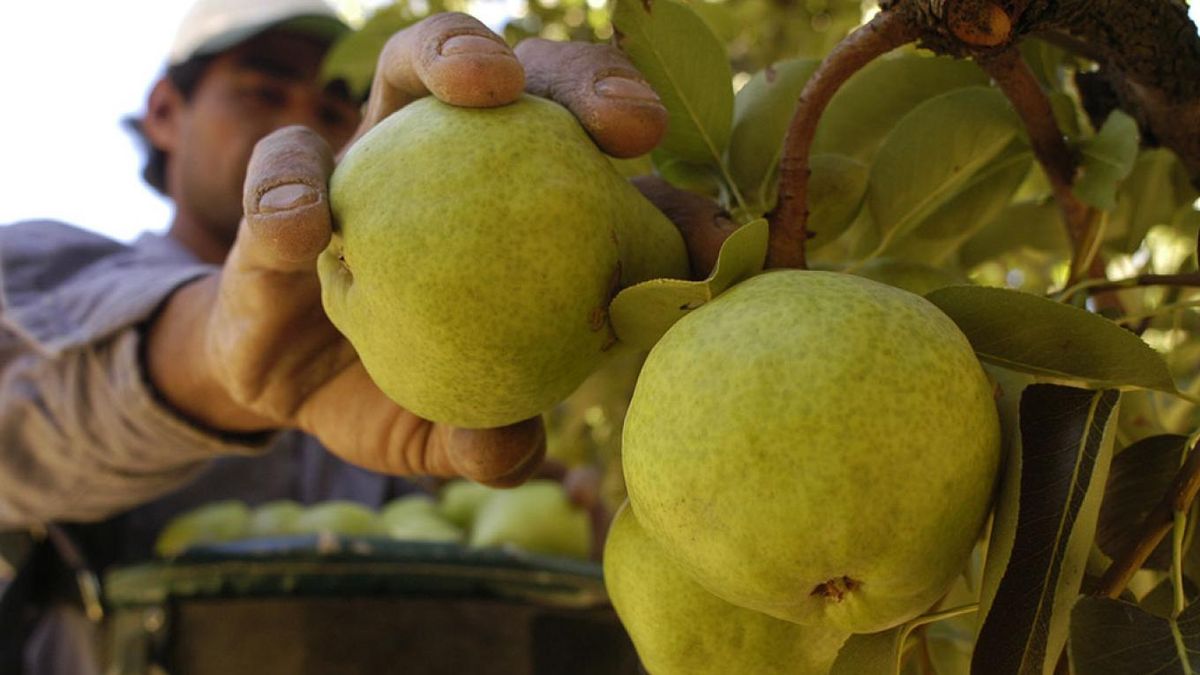Agustin Argibay, President of the Argentine Chamber of Integrated Fruit Growersassured that “What is currently happening is a very serious concern and problem because Russia is the second most important market for pears and the fourth for apples, that is why we are trying to reorganize the business in the Alto Valle and evaluate where we can direct our exports. ”.
According to Argibay, “there are two varieties of pear that the Russians buy, which are the Williams and the Packham, of which we sell close to 80,000 tons per year, which implies about US$60 million.”
A shipment from Argentina to Russia takes between four and five weeks, therefore some exporters were surprised by the war with containers halfway there. In these cases, uncertainty reigns because it is not known how the importers are going to pay, nor what the price of the ruble will be when they do. The Russian currency accumulates a devaluation of 40% since the beginning of the war.
When asked about this point, Argibay explained that “the devaluation has a negative impact because the Russians find it much more expensive to buy imported fruit, therefore they try to pay less and discussions arise.” The economic impact generated by not charging or receiving less money than is due hits the entire chain because when the exporter does not charge, all the links are affected up to the primary producer.
In the case of pear, exports could be forwarded to other destinations, where there is demand and active trade, such as Brazil, the United States, Canada, Colombia, Peru or the Pacific coast.
As for citriculture, the greatest impact is suffered by lemon exporters. Paul Padilla, president of the NOA Citrus Association (ANOCA) assured: “We export an average of 45,000 tons to Russia, which represents between US$35 and 40 million. It is an important market, which today represents little more than 20%, although in other times it reached 25%”.
What is worrisome in the case of the star citrus campaign is that the harvest and the work related to the sale to this destination should begin in a week. According to Padilla, this is the first export period that goes from mid-March to mid-May, therefore the activity is on pause.
Today companies must rethink every decision if their shipments should arrive in Russia since buyers cannot transfer foreign currency, therefore no local company is willing to load a ship if it is not known when it will be charged because at the local level too there are other variables that impact the exchange rate that could erode the profitability of the business.
Everything is uncertainty. Currently, local exporters try to collect the business 100% in advance to minimize risks, although on the other hand, Russian importers must transfer dollars and “cross their fingers” so that a greater devaluation does not take place that will prevent them from recovering the currencies that they transferred for the merchandise or that there is a blockade that makes it difficult for the ships to arrive.
From the sector they assure that if the Russian market falls it would be very bad news and although there are expectations placed on commercial development towards China, no destination is going to replace Russia in the short term.
daprile@ambito.com.ar
Source: Ambito
David William is a talented author who has made a name for himself in the world of writing. He is a professional author who writes on a wide range of topics, from general interest to opinion news. David is currently working as a writer at 24 hours worlds where he brings his unique perspective and in-depth research to his articles, making them both informative and engaging.




